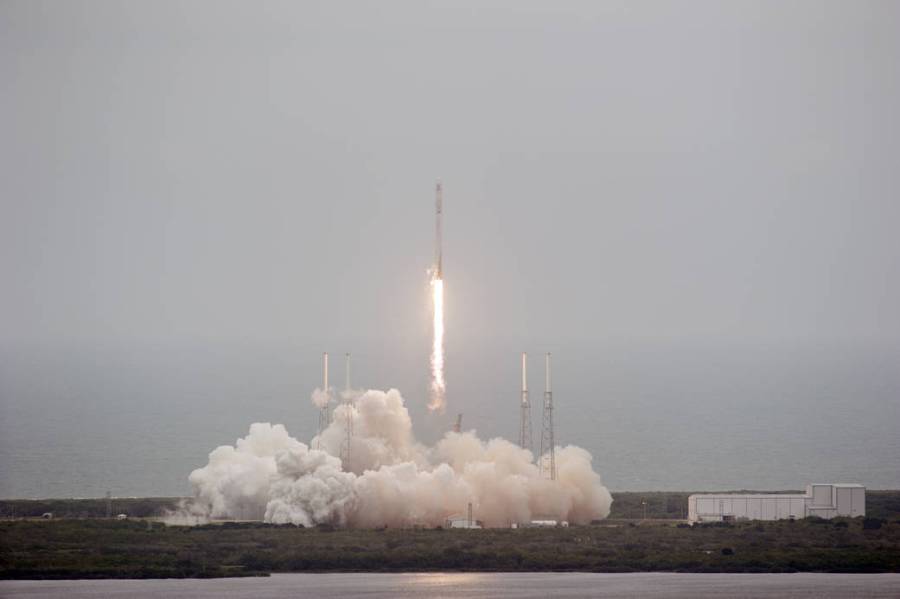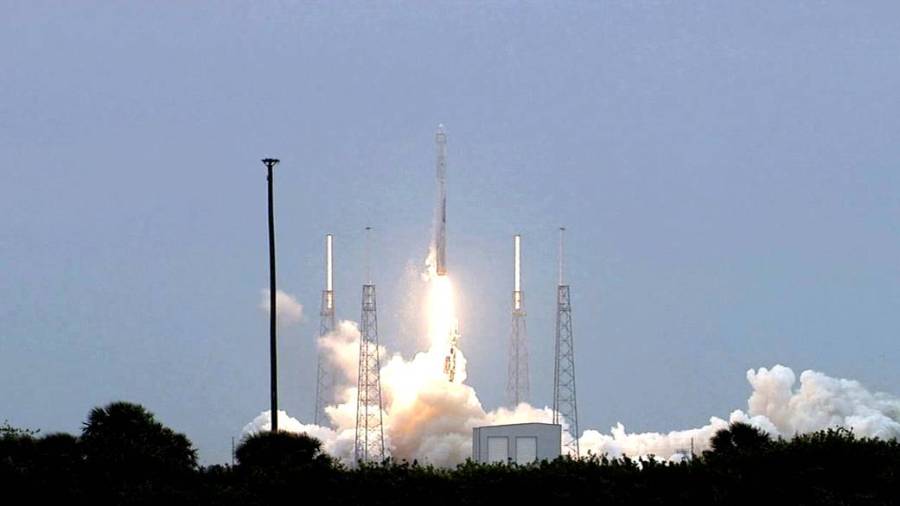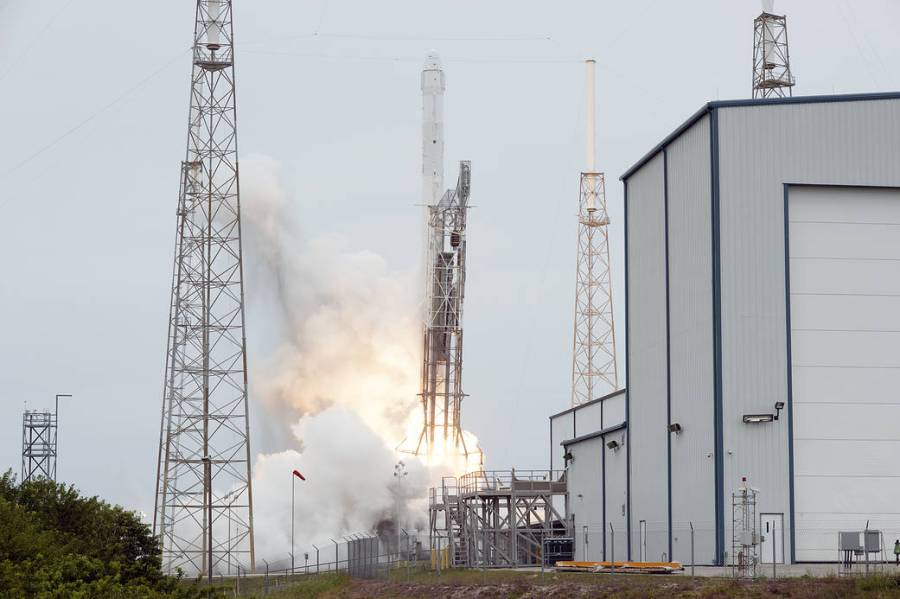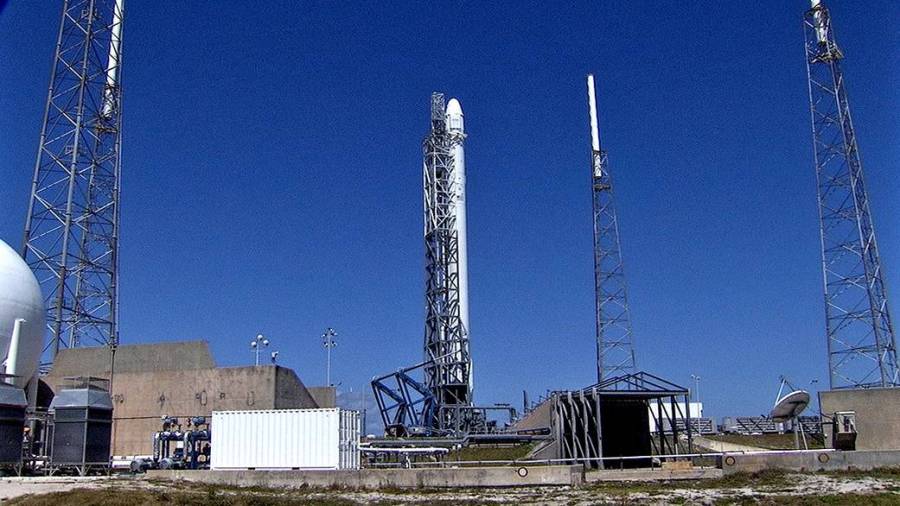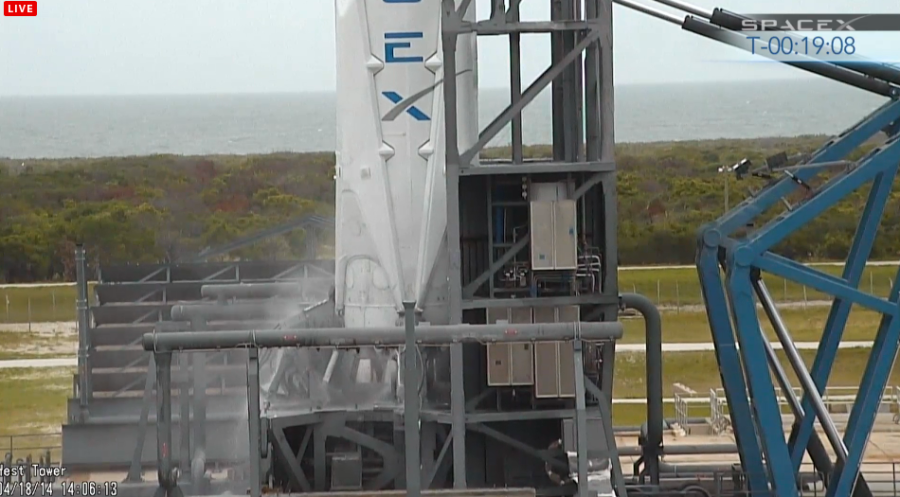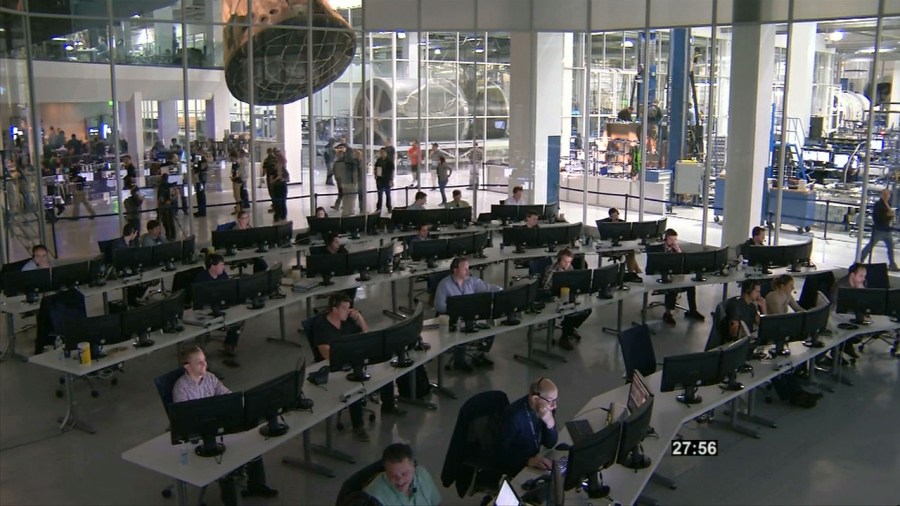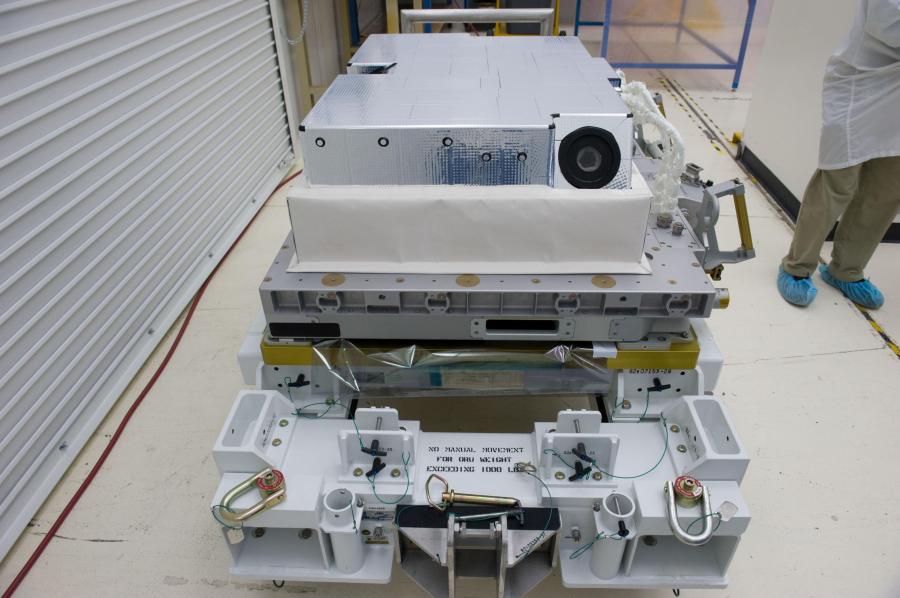The single engine on the second stage is now lifting the Dragon spacecraft into orbit following the burnout and separation of the first stage and its nine engines. The rocket is about 50 miles high and traveling at Mach 10. The second stage engine, the same kind as those on the first stage, lit on …
First Stage Shuts Down, Second Stage Ignites
